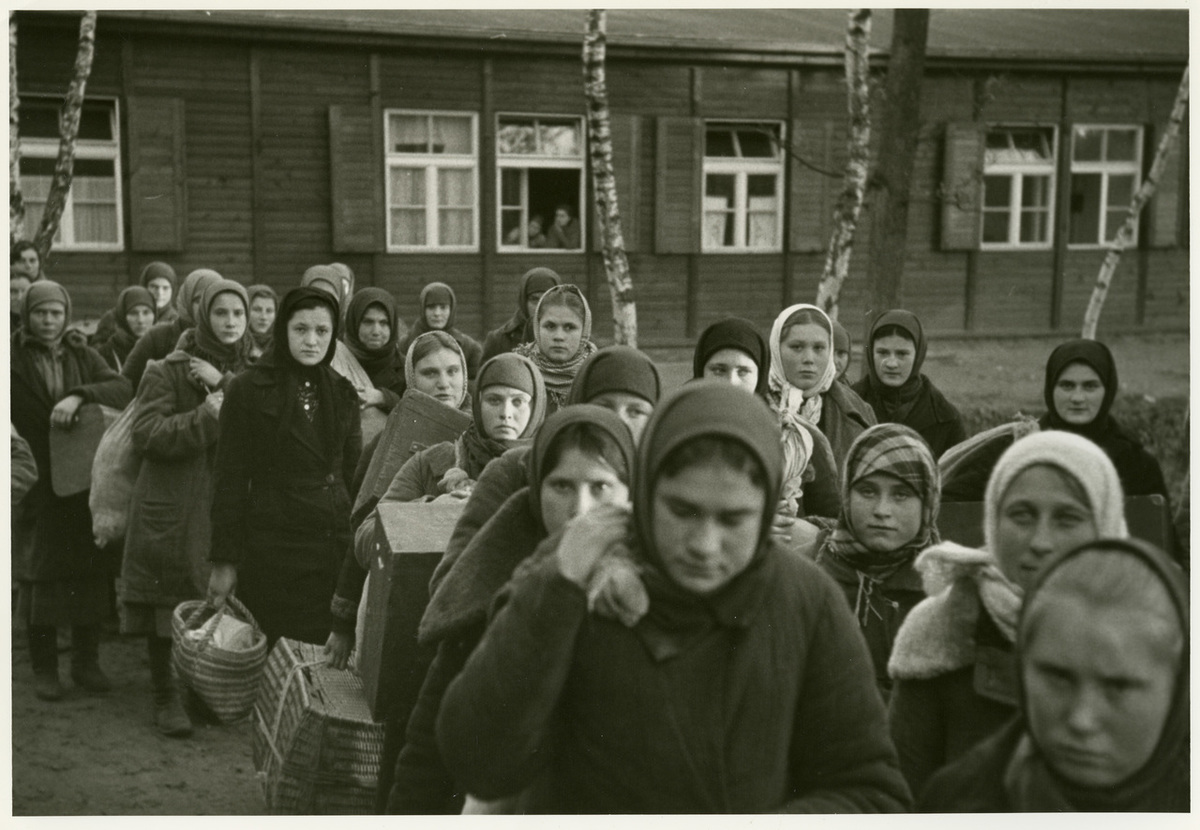Female Forced Laborers from the Soviet Union (December 12, 1942)
Abstract
To fill the labor shortage in the war economy during the Second World War, Nazi Germany deported people from all occupied territories to exploit them for forced labor in the armaments industry, agriculture, construction, and other industries. In 1944, six million civilian forced laborers worked in the German Reich, most of them from Poland and the Soviet Union (so-called “Ostarbeiter” or Eastern workers). More than a third were women. While the National Socialists rejected general compulsory service for German women for ideological and population policy reasons, “Eastern workers” were also forced to perform hard physical or dangerous labor. The living conditions of forced laborers from the Soviet Union and Poland were particularly bad. They were subject to discriminatory special decrees, had to wear an identifying label on their clothing (“OST,” “P”) and were basically treated like prisoners. The racist discrimination against the “Ostarbeiter” was echoed in the anti-Slavic prejudices widespread among the German population.
This photo shows a group of women and girls deported from the Soviet Union in the transit camp Wilhelmshagen near Berlin. In the transit camps, newly arriving forced laborers were registered and then distributed to businesses in the region.
Source

Source: Soviet women and girls as conscripted ‘Eastern workers’ in the transit camp Wilhelmshagen near Berlin, December 12, 1942. Deutsches Historisches Museum, BA109913.
© Deutsches Historisches Museum